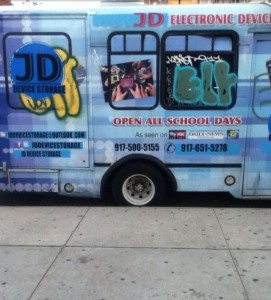After years of cell phones prohibited in New York City public schools, Mayor Bill de Blasio announced plans on lifting the city Department of Education (DOE) policy.
The change is in effect this March. Prior to the official announcement, several students would welcome the news.
Isetou Jawara, a student at Validus Preparatory Academy in Claremont, said she will enjoy lunch more since she would feel she was truly “on break.” “If students are given a bit more freedom with phones, things would be better,” she said.
Mayor Bill de Blasio, as part of a campaign promise, made known his plans to eliminate the policy. On Jan. 7, Mayor de Blasio declared “parents should be able to call or text their kids.”
“Lifting the ban respects families, and it will end the unequal enforcement that has penalized students at so many high-needs schools,” said Mayor de Blasio. “We are giving educators the tools and the flexibility to make this change responsibly.”
Carmen Farina, the DOE’s Chancellor, said the change is a matter of “common sense.”

Lunchrooms aren’t the only place where cell phones can be useful, but can also be incorporated in classrooms.
Patrick Callahan, a high school science teacher at Bronx Center for Science and Mathematics in Morrisania, said phones “should play more of a role.” “Smart phones are basically like a computer and can be effective to carry around,” he said. “For example, tomorrow I will be taking students on a field trip and they will be using phones to identify trees.”
Callahan noted that once cell phones are allowed, he would only permit students to use them for specific activities. For now, students must either leave their phone at home or shell out one dollar to have them secured in trucks during the school day.
But some students are not eager for the cell phone freedom. “Changing the cell phone policy will affect my education negatively because I won’t pay attention as much,” said Tega Odjegba, a junior at the Bronx Center for Science and Mathematics, adding phones should only be used during emergencies.
According to Pew Research Center, statistics taken in 2012 showed 78 percent of teens owned cell phones. Of that percentage, 37 percent of those teens owned smart phones. The smart phone did play a role in an incident where some students from Stuyvesant High School cheated on a test with it in 2012.
Fatou Dukuray, a senior at Marie Curie High School said, “Students can’t be trusted with cell phones because when students say that they are studying, they can be on social media or some sort.”





